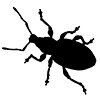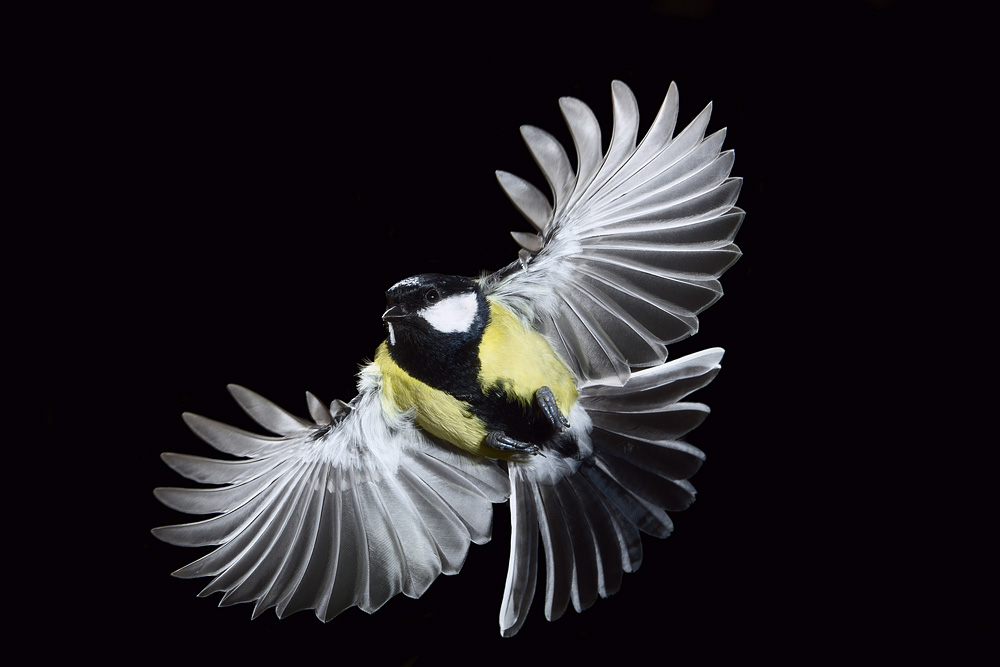Planning
There are a great many benefits to living in the Blackdownhills but one that I've particularly appreciated is having a garden full of birds. I keep the feeders regularly topped up and I’m rewarded by the many bird species that stop by for both food and drink.
Trying to photograph the birds in flight around the feeders was an obvious idea and one that I’ve had some success with previously. It can be a time consuming and frustrating process, the up side being that I’m able to shoot tethered and get some other work done indoors at the same time.
Equipment
These pictures do require rather a lot of equipment. The setup is very similar to that of photographing birds at the nest box, seen here. I fire the camera remotely using a radio trigger but also have it tethered to a macbook. I find this to be a much faster and more reliable solution than using the tether alone.
For lighting I use four canon speedlights and all the stands and heads that go with it. I trigger these with either infra red or radio trigger. I also set a lastolite background up a good distance behind the bird feeder to help control light levels
The shoot
The principle here is simple. I set my camera and lights pointing to a position just beyond the bird feeder. As the birds fly in, I fire the camera and freeze them in flight as they come into land. The reality is that, this is long process of constant adjustment, of both the lighting and camera angle. There is a huge element of chance in taking pictures this way and I’ll admit the vast majority fail. I rely on the frequency of the birds flying back and forth to the feeder in order to increase my chances of getting a decent shot.
It’s possible to a degree, to control a bird’s flight path towards the feeder. I close off certain openings on the feeder as well as placing extra perches nearby for the birds to fly in from. It might be misleading to call these images flight shots. What the birds are really doing in jumping from one perch to another and spreading their wings to slow themselves down.
he most difficult element with creating images like this, is controlling the ambient light. Too much natural light means soft images with blurred image overlaying a sharp one. These images are really a compromise of what I can achieve with the equipment at my disposal. Even with the use of four speedlights I need to shoot in over cast conditions in order to stand any chance of freezing the action. While on the subject of lighting, I must state that the birds are unaffected by the presence of the flash. Freezing birds in flight requires a very low power setting which is hard to even notice during the day. The birds are also only seeing one pop of light on each approach to the feeder. This is not like the strobe lighting that you often see with fast action lighting.












